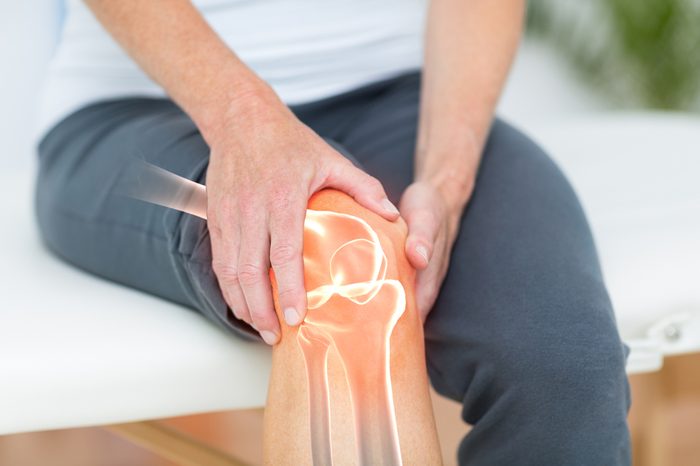
Nagging knee pain is no fun
The problem is that knee pain is far too common: Research suggests about one in four adults will suffer frequent knee pain. Pay attention to the type of ache you experience since some causes for pain in the back of the knee warrant a trip to the emergency room. Miho Tanaka, MD, the director of the Women’s Sports Medicine Program at Massachusetts General Hospital in Boston, says the things that warrant immediate medical attention are blood clots—they can cause numbness and weakness in the leg—and fevers and redness associated with swelling. Although swelling in the knee has many causes, in rare cases, it could be a sign of an infection, so it’s a good idea to seek immediate care for that as well, says Steven Lyons, MD, an orthopedic surgeon at Florida Orthopaedic Institute in Tampa, Florida. He adds that knee pain experienced after a major trauma like a fall or a car accident means you need an ER visit. If the knee pain lingers longer than a week or two without any prior injury, Dr. Lyons recommends visiting a doctor instead.
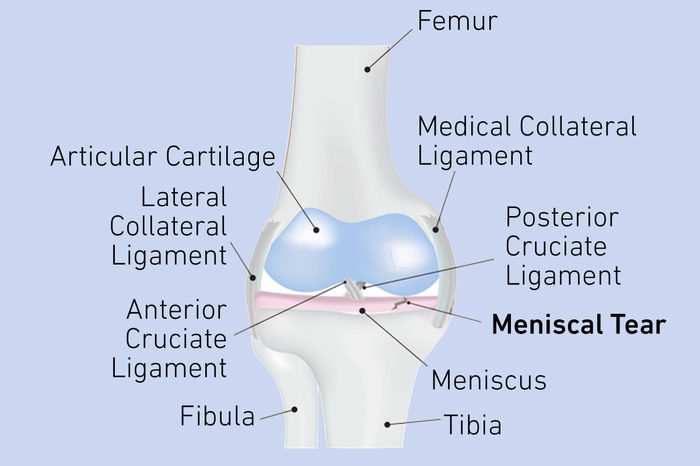
Meniscus Tear
According to the American Academy of Orthopaedic Surgeons, meniscus tears are among the most common knee injuries and a cause for pain behind the knee. The meniscus act as a shock absorber between your thigh and shins. Someone with a torn meniscus might feel a “pop” along with pain, stiffness, and catching or locking in the knee. Check out some more signs that you may have a torn meniscus.
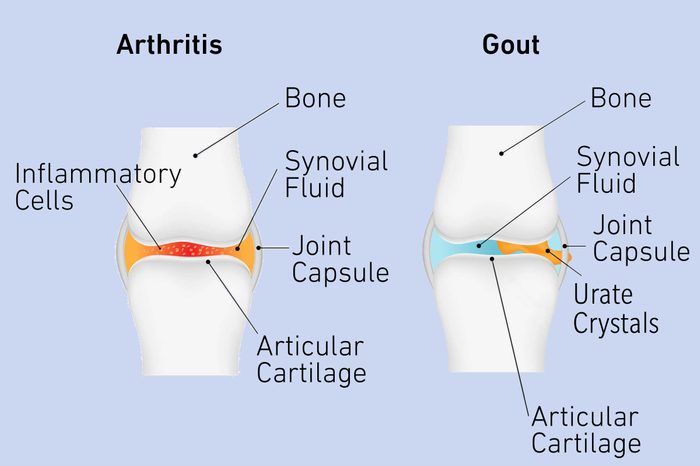
Arthritis and gout
Arthritis and gout (which is inflammatory arthritis), could cause pain behind the knee as well as a few other types of arthritis. Osteoarthritis is the most common type; it breaks down the cartilage or cushioning between joints, according to the Arthritis Foundation. Psoriatic arthritis also contributes to knee pain, as do autoimmune diseases such as lupus and rheumatoid arthritis, according to the National Psoriasis Foundation and Johns Hopkins Medicine. This is what it feels like to live with gout.
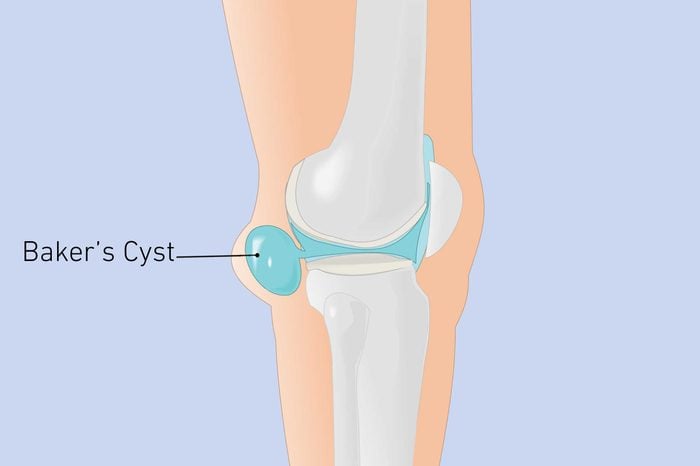
Baker’s cyst
It’s named after the surgeon who first described it, William Morrant Baker. Dr. Lyons explains a Baker’s cyst as a collection of fluid that goes from the front of the knee to the back of the knee and is accompanied by arthritis or a meniscus tear. Dr. Tanaka adds that a Baker’s cyst is often a sign of an underlying knee problem and can be a source of pain behind the knee. “This will typically go away with the management of the underlying source of the swelling and by treating the arthritis,” she says. Try one of these proven knee-pain treatments.
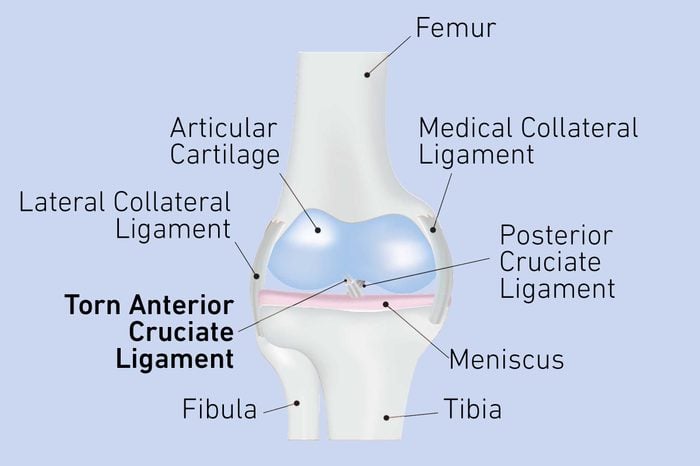
Calf or hamstring strain or cramp
Sudden activity and overuse are two leading causes of pain behind the knee due to a calf or hamstring strain or cramp, according to Dr. Tanaka. Movements that require pushing off or severe knee bending cause this calf and hamstring pain, respectively. “Both can be managed with ice, rest, gentle stretching, and anti-inflammatories; however, one should seek care if there is swelling or persistent pain associated with this to rule out blood clots,” Dr. Tanaka says. Dr. Lyons adds that although an orthopedist could treat this, if you can’t bear weight on the knee or are at risk of falling, then it’s time to go to the emergency room. Here’s what else could be causing pain in your calf.
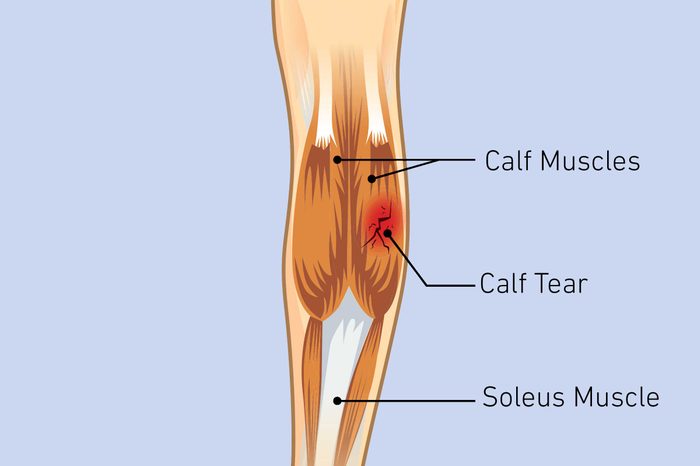
Ligament injuries
Various ligament injuries could contribute to behind-the-knee pain, reports Stanford University Health Care. This includes a partially or entirely torn ACL (anterior cruciate ligament) or MCL (medial collateral ligament). ACL tears are common with athletes, which can tear or stretch while twisting with planted feet. MCLs tear occur when something strikes the outside of the knee, forcing it to buckle. Along with many other knee injuries, both require the RICE treatment approach: rest, ice, compression, and elevation to reduce both pain and swelling. Get to know the secrets pain doctors won’t tell you.

